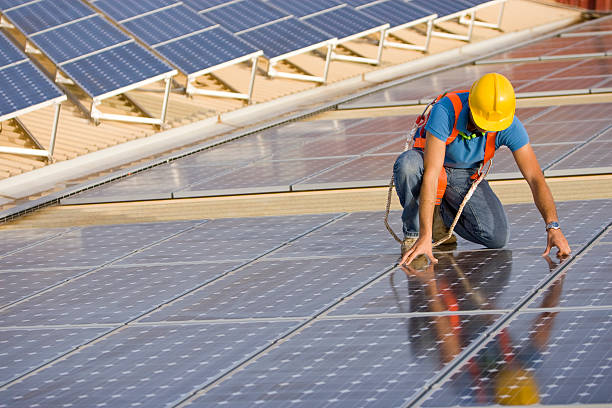types of solar panels

Solar panels can be an attractive and cost-efficient method of providing power for your home, though you’ll need to know a few things before you buy. This article will cover the types of solar panels and what they are best suited for.
Different Types of Solar Panels
There are two main types of solar panels, photovoltaic (PV) and concentrated solar power (CSP). PV panels use semiconductors to convert sunlight directly into electricity. This direct conversion makes them a more efficient method of generating power than CSP, which uses mirrors to concentrate the light and heat an oil medium, creating steam that turns a turbine attached to a generator.
CSP systems can generate more energy than PV systems when operated at capacity, but they are less well-suited for residential use due to their large size requirements.
The main difference between these two solar panels is in their design; besides that, they do pretty much the same thing. They use the sun’s power to turn an electrical current and keep your home running.
PV panels are usually mounted on racks on top of a house or a warehouse, although some homeowners have had luck mounting them to the ground if they can get permission from their local government. The racks protect them from rain, snow, hail, and other harsh weather. They have to be installed in a way that makes them easy to clean and maintain while still producing electricity.
CSP panels are typically installed at the top of towers that reach hundreds or thousands of feet into the air. When working at maximum capacity, they can heat oil and create steam which drives a turbine connected to an electric generator. The heat and energy produced by the system are transferred via a powerline to your local power company, usually through a substation.
CSP systems are usually sized for extensive facilities and produce more energy than PV panels at peak operation. They may need to be installed in a way that allows them to be easily maintained while still producing electricity, which is not as easy with PV panels.
Space requirements
PV panels come in different sizes depending on their output.
They range from around 200 watts up to 30 kilowatts, which are a lot of different sizes. An average house uses about 100 watts per square foot of glass surface area, whether windows or skylights.
It means that it’s hard to find an efficient system. A residential system will generally have to be at least 250 watts since you need enough power to run the house and anything else attached to the house.
CSP systems are a bit more compact; they are much easier to install in smaller areas since they only need a space for their panels and the tower where they are installed. They can cover up to 3,000 square feet. In an industrial setting, a 9 kW CSP plant can produce 375 million kilowatt-hours per year—enough to supply around 4 percent of Portland’s annual electricity needs on its own.
What to Watch Out For
Solar panels are an expensive investment that requires regular maintenance, but if done correctly, they will last for years. Not all systems are created equal either; some people have had their systems fail because of improper maintenance or installation mistakes, which can be a real hassle if they disrupt your power supply. Check what kind of warranty you have before you buy to avoid having to deal with unexpected costs down the road.
For most homeowners, solar panels are a significant investment. They save money by reducing your energy bill and the electricity company’s bottom line. You also get to support renewable energy and help the environment—and it looks good on your resume when you interview for a job in solar.